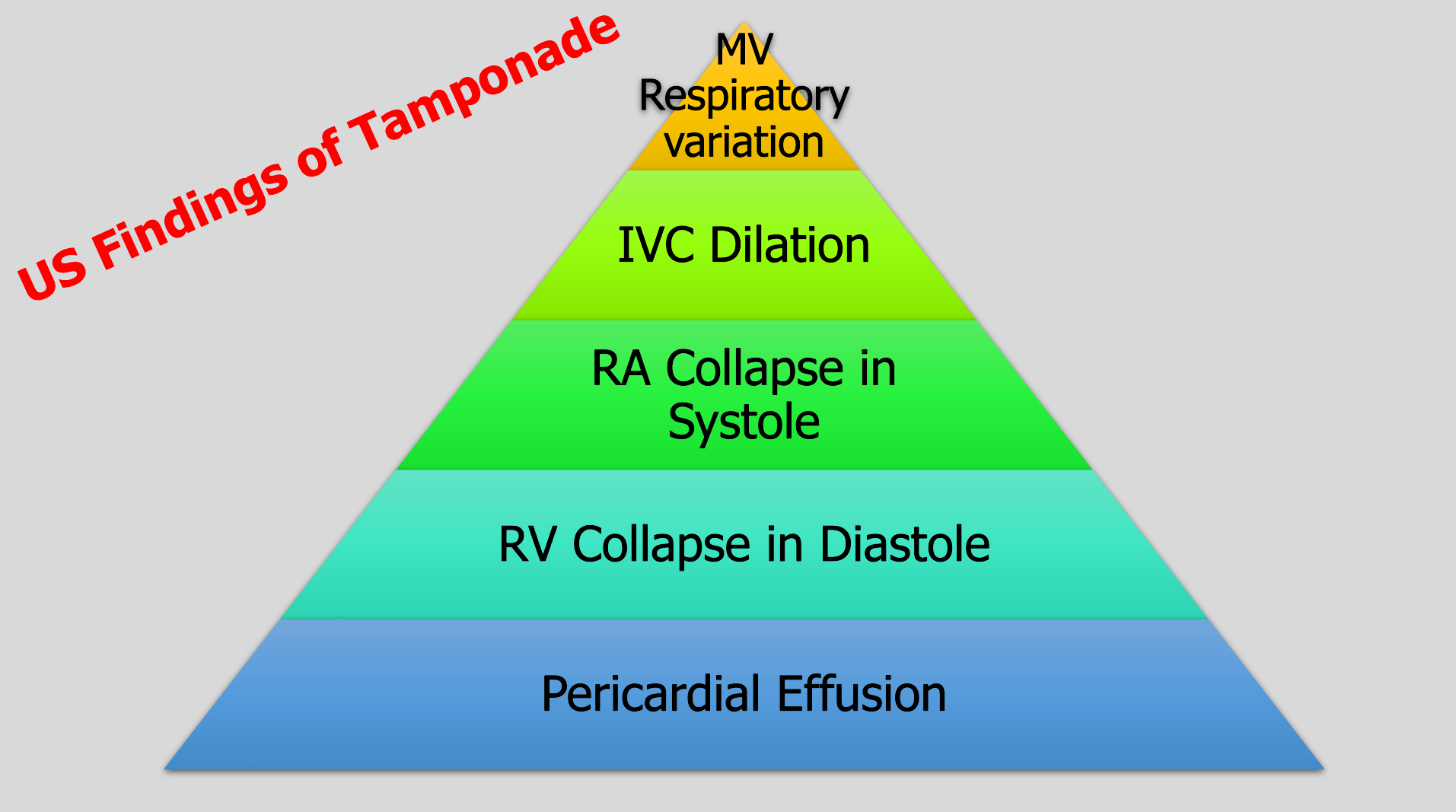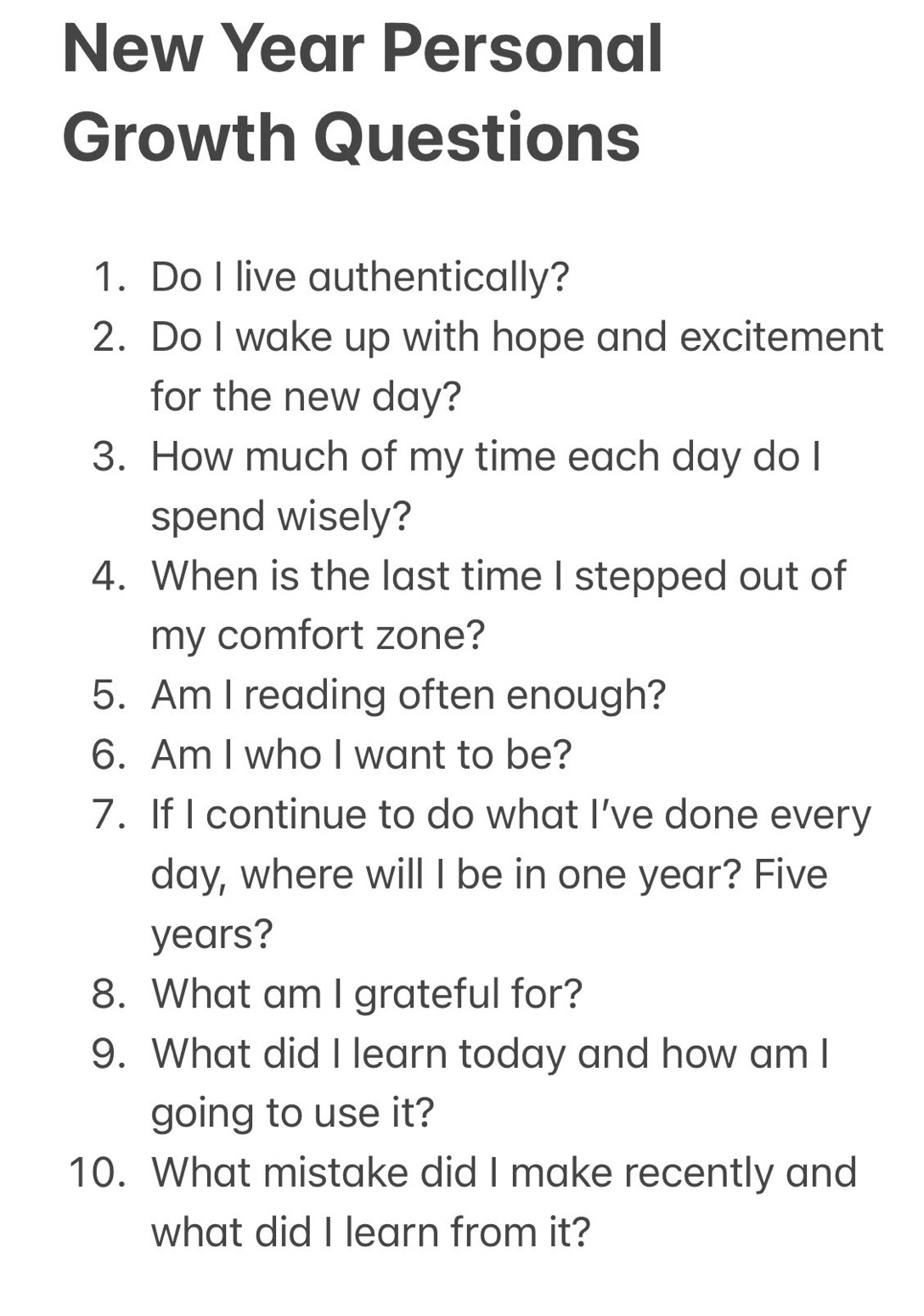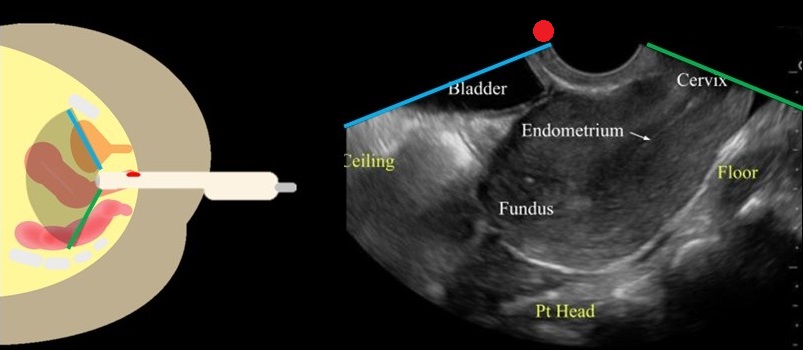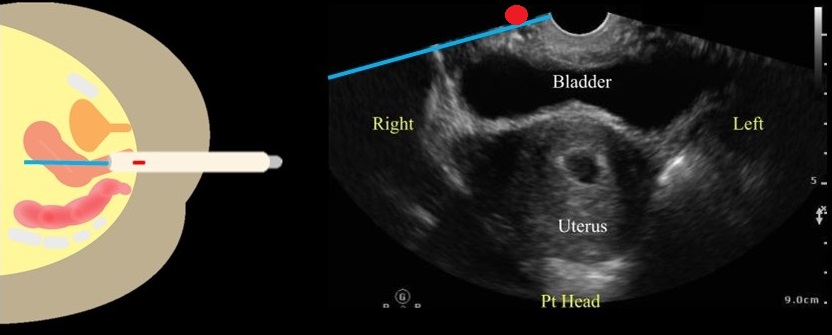Category: EMS
Keywords: ACS, PE, risk stratification (PubMed Search)
Posted: 1/17/2024 by Jenny Guyther, MD
(Updated: 12/5/2025)
Click here to contact Jenny Guyther, MD
The 2nd most common reason for EMS activation is chest pain. In this study, paramedics were asked to complete the HEAR (history, EKG, age, risk factor) score, EDACS (ED Assessment of chest pain score), the Revised Geneva Score and the PERC (Pulmonary embolism rule-out criteria) for all patients older than 21 who presented with chest pain. The positive and negative likelihood ratios (LR) of the risk scores in relation to 30 day MACE and PE risk were calculated.
837 patients were included in this study with 687 patients having all 4 scores completed. The combination of HEAR/PERC had the best negative LR (0.25) for ruling our MACE and PE at 30 days. However, these scores, alone or in combination, were not sufficient to exclusively guide treatment or destination decisions. Adding biomarkers (ie troponin or Ddimer to the prehospital setting) could improve the usefulness of these scores.
Stopyra JP, Snavely AC, Ashburn NP, et al. Performance of Prehospital Use of Chest Pain Risk Stratification Tools: The RESCUE Study. Prehosp Emerg Care. 2023;27(4):482-487. doi:10.1080/10903127.2022.2036883
Category: Ultrasound
Keywords: POCUS; Cardiac Tamponade; Cardiology; Critical Care (PubMed Search)
Posted: 1/15/2024 by Alexis Salerno Rubeling, MD
(Updated: 12/5/2025)
Click here to contact Alexis Salerno Rubeling, MD
What are the signs of Cardiac Tamponade on ultrasound?
Think of them as a pyramid with clinical importance decreasing as you rise to the top of the pyramid.

To have tamponade you need a pericardial effusion.
The most specific sign of tamponade is RV collapse in diastole.
The earliest and most sensitive sign is RA collapse over 1/3 of the cardiac cycle from late diastole into systole, which is why we say RA collapse during systole.
IVC dilation also occurs but is not sensitive.
Placing the pulse wave Doppler over the mitral valve and evaluating the change with respirations is an advanced technique. It’s positive if you have 25% change.
Don’t know if you are in systole or diastole? Connect your telemetry leads to the ultrasound machine. Don't have leads? Then you can also cine scroll on a subxiphoid view or parasternal view to look at when the valves are open and closed, then compare to the cardiac wall positioning.
Alerhand S, Adrian RJ, Long B, Avila J. Pericardial tamponade: A comprehensive emergency medicine and echocardiography review. Am J Emerg Med. 2022 Aug;58:159-174. doi: 10.1016/j.ajem.2022.05.001. Epub 2022 May 6. PMID: 35696801.
Category: Trauma
Keywords: elder, Trauma, delirium, confusion (PubMed Search)
Posted: 1/14/2024 by Robert Flint, MD
(Updated: 12/5/2025)
Click here to contact Robert Flint, MD
Imagine lying in a bed staring at the ceiling and these fuzzy faces looking down on you clearly saying something to you but you can't hear them while your hip and pelvis are hurting worse than anything you have ever felt. That's what many of our fall from standing elderly patients experience in emergency departments on a regular basis. Do not remove glasses or hearing aides from your elderly patients. Work with our EMS colleagues to make it a practice to bring glasses and hearing aides along from the scene. Speak slowly and get close to their ear to help if necessary. That confusion, delirium or dementia you assume this patient has is actually just hearing impairment and poor vision.
Category: Orthopedics
Posted: 1/13/2024 by Brian Corwell, MD
Click here to contact Brian Corwell, MD
Wrist pain in golfers
70% of amateur golfers will experience a sport related injury in their lifetime.
The hand/wrist is the third most common body area injured by golfers after the back and elbow.
Studies fail to include multi trauma from golf cart accidents:)
Wrist injuries are 3x more frequent than hand injuries.
Wrist injury affects 13 to 20 percent of amateur golfers.
Injury is most likely to occur at the point of ball impact.
Injury most commonly affects the lead wrist rather than the trail wrist.
The lead wrist is left sided for right-handed players and right sided for lefties
Due to many differences in grip and wrist position there are several injury patterns.
Most causes of wrist pain in golfers are tendinopathies.
Due to impact stress and repetitive swinging movements
If pain is primarily radial, consider DeQuervain's tenosynovitis
Poor swing mechanics such as premature wrist uncocking in the early downswing places the wrist in ulnar deviation thereby stressing the first dorsal compartment.
Significant ulnar deviation of the lead wrist at time of ball impact may also stress the tendons of the first dorsal compartment.
If pain is primarily ulnar consider Extensor Carpi Ulnaris tendonitis & subluxation
A strong golf grip (more knuckle’s visible) is associated with greater ECU stress during the swing
The height of hand position can also stress the ECU tendon
Differential diagnosis:
TFCC injury
Hook of hamate fracture
Carpal Tunnel Syndrome
Ulnar Tunnel Syndrome
Category: Pharmacology & Therapeutics
Keywords: COVID-19, Paxlovid (PubMed Search)
Posted: 1/11/2024 by Alicia Pycraft
Click here to contact Alicia Pycraft
Nirmatrelvir-ritonavir (Paxlovid™) is a combination of two protease inhibitors used for the treatment of mild-moderate symptomatic COVID-19. Nirmatrelvir inhibits the SARS-CoV2 main protease, and ritonavir inhibits metabolism of nirmatrelvir, acting as a “booster” to increase nirmatrelvir concentrations.
The EPIC-HR trial, which included non-hospitalized adults with mild-moderate COVID-19 who were unvaccinated and at risk of progressing to severe disease, showed an 89% reduction in COVID-19-related hospitalization or 28-day all-cause mortality in patients treated with nirmatrelvir-ritonavir compared to placebo. The efficacy rates in this trial were similar to remdesivir (87% relative risk reduction), and greater than molnupiravir (31% relative risk reduction), two alternative agents used for treatment of mild-moderate COVID-19. However, these three agents have never been directly compared. Nirmatrelvir-ritonavir was initially approved by the FDA under Emergency Use Authorization (EUA), but is now fully FDA-approved as of May 2023.
Which patients benefit?
Drug-Drug Interactions:
Dosing:
Common side effects:
Bottom Line: Paxlovid is appropriate for patients with symptomatic mild-moderate COVID-19 with risk factors for progression to severe disease. Ask your pharmacist for assistance evaluating drug-drug interactions!
Additional resources:
Category: Gastrointestional
Posted: 1/10/2024 by Neeraja Murali, DO, MPH
(Updated: 12/5/2025)
Click here to contact Neeraja Murali, DO, MPH
This retrospective cohort study examined patients over a one year period to evaluate factors associated with unfavorable outcomes in acute abdominal pain.
Unfavorable outcomes were defined as any of the following: 1) shock requiring an invasive procedure such as central line insertion or mechanical ventilation 2) emergency surgery 3) post-operative complications OR 4) in-hospital cardiac arrest
951 patients were included in the study.
Physical exam and laboratory signs associated with the above unfavorable outcomes included:
-diastolic BP < 80 mmHG
-RR ? 24/min
-RLQ tenderness
-abd distension
-hypoactive bowel sounds
-presence of specific abdominal signs (ie Murphy's sign, psoas sign, etc).
-leukocytosis
-ANC >75%
Further, ED Length of Stay of > 4 hours was also associated with unfavorable outcomes.
Food for thought when considering serial abdominal exams when diagnosis is unclear…
Dadeh AA. Factors associated with unfavorable outcomes in patients with acute abdominal pain visiting the emergency department. BMC Emerg Med. 2022 Dec 6;22(1):195. doi: 10.1186/s12873-022-00761-y. PMID: 36474160; PMCID: PMC9727909.
Category: Critical Care
Posted: 1/10/2024 by William Teeter, MD
Click here to contact William Teeter, MD
Many of us in the endovascular resuscitation space were eagerly awaiting some clarity on REBOA from this trial. Unfortunately, this is not the definitive trial that either confirms or denies the utility of REBOA in trauma.
Unfortunately, even this well-designed trial suffered from major problems, most notably enrollment issues (ITT: of the 46 in the REBOA group, only 19 actually got REBOA!!) and matching issues (Brain AIS was significantly higher in the REBOA group versus standard practice [3 vs 0] & initial systolic pressure was lower in the REBOA group, both of which are known risk factors for poor outcome in REBOA).
This trial's failure to provide a definitive benefit or the nail-in-the-coffin is frustrating to say the least. Until that day, we will continue to be selective of the "right" patient and to put in femoral arterial lines early and often.
Zaf Qasim has an excellent talk on EMRAP about this study, as does St. Emlyn's.
Category: EMS
Posted: 1/7/2024 by Ben Lawner, MS, DO
Click here to contact Ben Lawner, MS, DO
BACKGROUND:
Critical care transport teams are tasked with extending specialized care to the bedside. Given the uptick in COVID and ARDS cases, there are increasing demands for the transport of patients proned for respiratory compromise. An air medical service in British Columbia (BC) published their experience with transporting intubated patients in the proned position. The BC service utilizes 2 trained flight paramedics and conducts transports via pressurized fixed wing and non pressurized rotor wing aircraft. The small, retrospective study of 10 patients demonstrated feasibility of this practice. No extubations were recorded in the study population. 6/10 patients experienced >6% increase in oxygen saturation and no medical lines were disconnected during transport.
BOTTOM LINE:
BALTIMORE, MD SPECIFIC PEARL:
BONUS AVIATION ENTHUSIASTC SPECIFIC PEARL:
Naples C, Micalos PS, Johnston T, Schlamp R, Besserer F, Vu E. Prone Positioning of Ventilated Patients During Air Medical Evacuation: A Case Series. Air Med J. 2024 Jan-Feb;43(1):55-59. doi: 10.1016/j.amj.2023.10.004. Epub 2023 Nov 8. PMID: 38154841.
Category: Trauma
Posted: 1/7/2024 by Robert Flint, MD
(Updated: 12/5/2025)
Click here to contact Robert Flint, MD
Approaching patients based on their frailty, not their age, leads to better medical decision making. A recent best practice guideline from the American College of Surgeons sums up frailty:
“It is well recognized that aging is associated with physiological decline, but this decline is not uniform across all individuals or even across one individual’s organ systems. Frailty is a geriatric syndrome, clinically distinct from age, comorbidity, and functional disability, characterized by age- associated depletion of physiological reserves that leads
to a state of augmented vulnerability to physical stressors and a diminished ability to recover from illnesses.” A trauma specific frailty index exists to identify these high risk patients.
BEST PRACTICES GUIDELINES
GERIATRIC TRAUMA
MANAGEMENT
November 2023
Trauma
Programs
American College of Surgeons
https://www.facs.org/media/ubyj2ubl/best-practices-guidelines-geriatric-trauma.pdf
Category: Administration
Posted: 1/6/2024 by Robert Flint, MD
(Updated: 12/5/2025)
Click here to contact Robert Flint, MD
Since 2014, Medicare has payed for inpatient services for Medicare patients who’s admitting physician noted that hospital stay required at least 48 hours (measured as 2 midnights) or required specialty care that could not be performed as an out patient. This rule now will apply to Medicare Advantage insurance patients as well. Physicians will need to document their reasoning why a patient’s stay will likely require two midnights.
Jakob Emerson - Updated Friday, December 29th, 2023 Becker’s Payer Issues
Category: Critical Care
Posted: 1/2/2024 by Mark Sutherland, MD
Click here to contact Mark Sutherland, MD
As is well known, fluid resuscitation strategy ("liberal" vs “restrictive”) in sepsis is a controversial topic. An RCT in NEJM called CLOVERS that looked at this and found no difference was recently re-analyzed to answer the following question… should my choice of strategy change if the patient presents with an Acute Kidney Injury (AKI)?
For the most part, the answer is no. In the group with AKI, the restrictive group did slightly, but non-statistically-significantly, better. Interestingly, in the group without AKI, the relationship reversed, and in fact of the 4 groups (AKI vs no AKI, Restrictive vs Liberal), the no AKI but liberal strategy group did best (liberal vs restrictive in the no AKI group almost reached statistical significance in favor of the liberal strategy, but not quite).
Bottom Line: In septic patients presenting with an AKI, we don't know whether liberal or restrictive strategy is better, but either is probably reasonable. In patients presenting without an AKI, it may be more ok to lean more towards liberal fluid resuscitation than in non-AKI patients*.
*There are several important caveats here: 1) they didn't closely evaluate for potential side effects of over-resuscitation such as hypoxia or pulmonary edema (the primary outcome was need for renal replacement therapy), 2) as mentioned above, this trended towards but did not reach statistical significance, 3) this is one small study which did a subgroup secondary-analysis of a larger trial.
Category: Administration
Keywords: Personal growth. (PubMed Search)
Posted: 12/31/2023 by Robert Flint, MD
(Updated: 12/5/2025)
Click here to contact Robert Flint, MD
As the calendar flips to a new year, consider not setting goals or resolutions. Studies show unmet goals or having too many half finished projects leads to increased stress, anxiety and depression. Instead, consider approaching the new year looking for growth, introspection, and striving to achieve excellence. Understanding the why and what motivates you will lead to the correct what and how. Here are some questions to get you thinking about the why. May your New Year be filled with growth and excellence!

Category: Pharmacology & Therapeutics
Posted: 12/30/2023 by Robert Flint, MD
(Updated: 12/5/2025)
Click here to contact Robert Flint, MD
For the agitated geriatric patient, if verbal deescalation, distraction, and providing a safe quiet area do not work and you require chemical sedation use oral antipsychotics first. Follow this with IV or IM antipsychotics. Avoid benzodiazepines due to often worsening delirium or respiratory depression. For dosing, start low and go slow.
Emergency Medicine Clinics VOLUME 42, ISSUE 1, P135-149, FEBRUARY 2024
Michelle A. Fischer, MD, MPH Monica Corsetti, MD
Published:July 31, 2023DOI:https://doi.org/10.1016/j.emc.2023.06.016
Category: Trauma
Posted: 12/24/2023 by Robert Flint, MD
(Updated: 12/5/2025)
Click here to contact Robert Flint, MD
NEXUS criteria for blunt chest trauma patients who are over 14 years old, not intubated:
>60 years old
rapid deceleration defined as fall > 6 meters or motor vehicle crash >64 km/hour
chest pain
intoxication
abnormal alertness or mental status
distracting painful injury
tenderness to chest wall palpation
If abnormal chest X-Ray proceed to chest CT. Negative predictive value of 99.9% excluding major injury.
Category: Orthopedics
Posted: 12/23/2023 by Brian Corwell, MD
(Updated: 12/5/2025)
Click here to contact Brian Corwell, MD
Estimating the size of knee effusions
While this size range is typically easily detectable on exam. This may not apply to patients who are either very muscular or obese.
If the detection of a small to moderate sized effusion would change patient management
Consider ultrasound:
As compared to MRI (sensitivity of 81.3 % and a specificity of 100 %)
Draghi F, Urciuoli L, Alessandrino F, Corti R, Scudeller L, Grassi R. Joint effusion of the knee: potentialities and limitations of ultrasonography. J Ultrasound. 2015 Sep 18;18(4):361-71.
Category: EMS
Keywords: EMS, red, yellow, divert, capacity (PubMed Search)
Posted: 12/20/2023 by Jenny Guyther, MD
(Updated: 12/5/2025)
Click here to contact Jenny Guyther, MD
US hospitals have traditionally been concerned that without an ambulance diversion protocol that they would be overrun with EMS arrivals. EMS had been concerned that without diversion there would be extended wait times at the hospital. This study looked at EMS arrivals one year (2021) before the elimination of diversion and compared the number to one year after diversion elimination (2022).
This study of a single level 1 trauma center showed that there was NO difference between the number of EMS arrivals per day (84 vs 83, p = 0.08), time to room for ESI 2 patients, time to head CT in acute stroke patients OR ambulance turn around time (16 min vs 17 min, p = 0.15).
Aaron M. Burnett, Kari B. Haley, Matthew F. Milder, Bjorn K. Peterson, Joey Duren, Andrew Stevens, Danielle M. Hermes, Paul Nystrom, Joseph Lippert, Jennifer L. Moberg & Kurt M. Isenberger (2023) Elimination of Emergency Department Ambulance Divert during the COVID-19 Pandemic Was Not Associated with an Increase in the Average Number of Ambulance Arrivals per Day, Prehospital Emergency Care, DOI: 10.1080/10903127.2023.2271567
Category: Critical Care
Posted: 12/19/2023 by Mike Winters, MBA, MD
(Updated: 12/5/2025)
Click here to contact Mike Winters, MBA, MD
Acute-On-Chronic Liver Failure
Perricone G, et al. Intensive care management of acute-on-chronic liver failure. Critical Care. 2023;49:903-21.
Category: Ultrasound
Keywords: Obstetrics; POCUS; Transvaginal Ultrasound (PubMed Search)
Posted: 12/18/2023 by Alexis Salerno Rubeling, MD
Click here to contact Alexis Salerno Rubeling, MD
By performing a Point-of-Care Transvaginal Ultrasound (TVUS), we can decrease length of stay for patients with early pregnancy. Moreover, if an ectopic pregnancy is identified, we can decrease time to the OR for these patients.
Begin by discussing the exam with the patient and ensuring they have emptied their bladder. Apply a probe cover and add sterile lubricant to the outside of the probe tip. You can save time by performing a TVUS immediately after the pelvic speculum exam for swab collection.
Gently introduce the transducer with the marker upward, directed towards the ceiling. As you slowly advance, the uterus will be visualized in a sagittal orientation. Fan through the uterus by moving the probe handle left and right.

Image From: doi: 10.1016/j.emc.2022.12.006.
Rotate the transducer so that the marker is directed towards the patient's right side. Fan through the uterus by lifting the probe handle up and down.

Image From: doi: 10.1016/j.emc.2022.12.006.
If a gestational sac is found, you should measure the gestational age and if present, fetal heart rate.
Tilt the transducer towards the patient's left or right side to visualize the adnexa. The adnexa will be located medially to the iliac vessels.
Remove the transducer and follow your department protocol for high level disinfection.
Salerno A, Lewiss RE. Rekindling the Relevance of Obstetrical Transvaginal POCUS: Overcoming Barriers to Ensure Patient-Centered Care. POCUS J. 2023 Nov 27;8(2):106-108. doi: 10.24908/pocus.v8i2.16855. PMID: 38099157; PMCID: PMC10721291.
King SA, Salerno A, Sommerkamp S. Ultrasound in Pregnancy. Emerg Med Clin North Am. 2023 May;41(2):337-353. doi: 10.1016/j.emc.2022.12.006. Epub 2023 Feb 9. PMID: 37024168.
Category: Trauma
Posted: 12/17/2023 by Robert Flint, MD
(Updated: 12/5/2025)
Click here to contact Robert Flint, MD
This commentary offers another reminder that there is significant bias in which trauma patients receive alcohol testing when that decision is made on a case by case basis. Age, sex, socioeconomic, race, injury pattern, all have been shown to influence provider ordering. Trauma systems should have pre-defined ordering criteria to eliminate this bias. The importance of gathering this testing information is to provide intervention and treatment to those in need. First we have to identify all patients in need.
Vanessa Cubas1, David N Naumann Addressing biases in alcohol testing for trauma patients: what is the solution? Emergency Medicine Journal. Volume 40 Issue 11. https://doi.org/10.1136/emermed-2023-213419
Category: Pediatrics
Keywords: fever, SBI, infants (PubMed Search)
Posted: 12/15/2023 by Jenny Guyther, MD
(Updated: 12/5/2025)
Click here to contact Jenny Guyther, MD
Urinary tract infection (UTI) is the leading cause of fever without a source in infants younger than 3 months. This data was collected from patients who presented to the emergency department with fever without a source over a 16 year period. Out of 2850 patients, 20.8% were diagnosed with a UTI, the majority of which grew E coli. Of those patients who were diagnosed with UTI, these patients were more likely to have a history of renal/GU problems, have a fever of at least 39C (38% vs 29%) or poor feeding (13% vs 8.7%). However, 48% had none of these risk factors. Also 6.1% of patients with a febrile UTI had another invasive bacterial infection. These patients were more likely to be < 1 month, be "irritable" per parents and have an elevated procalcitonin and CRP.
Bottom line: A lack of risk factors can not exclude a UTI in febrile infants < 3 months. A diagnosis of UTI also does not definitively exclude an additional invasive bacterial infection in a subset of these children.
Lejarzegi, Ainara MD*; Fernandez-Uria, Amaia MD*; Gomez, Borja MD, PhD*; Velasco, Roberto MD, PhD†; Benito, Javier MD, PhD*; Mintegi, Santiago MD, PhD*. Febrile Urinary Tract Infection in Infants Less Than 3 Months of Age. The Pediatric Infectious Disease Journal ():10.1097/INF.0000000000003947, April 24, 2023. | DOI: 10.1097/INF.0000000000003947
